Quotes on Design. Curated by Chris Coyier.
(thank you christina)
Thank you Michael Mulvey for creating these Hand & Arrow icons that every UI designer is scrambling for at one point. 1000 instant karma points your way!
Download them here: cursors_arrow_and_hand.psd.zip (all 3 icons on separate layers, PS CS3)
(via designnotes)
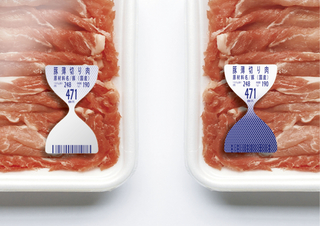
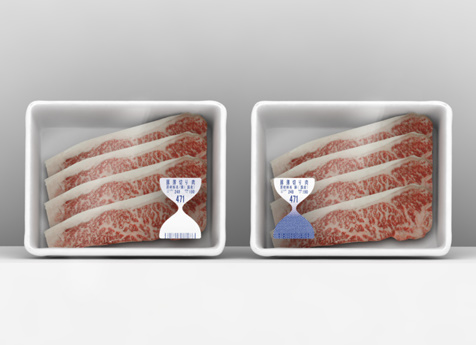
Johnny, over at Spoon & Tamago is currently doing a preview of the Good Design Awards (happening at the end of the month) and pointed me to one of his personal favorites so far; the Fresh Label.
Design studio TO-GENKYO proposes a new method of tracking a foods expiration date by using a universally recognizable visual. Over the last year or so Japan had been struck by a number of scandals involving food companies tampering with expiration dates. The new design keeps people honest by changing colors based on the level of ammonia the food emits as it ages. After it has passed its expiration date the barcode is no longer readable, making it impossible to sell.
Daivd Airey currently features a post with some quotes by Debbie Millman, the newly-appointed AIGA President, on the topic of spec work:
I am personally vigorously, passionately and fundamentally AGAINST designers being asked to do work on spec and neither I nor my firm will ever participate in speculative work. I have said it before and I will say it again: Speculative work denigrates both the agencies and the designers that participate. If we give away our work for free, if we give away our talent and our expertise, we give away more than the work. We give away our souls.
Read the full interview over at NO!SPEC with Debbie Millman.
In his post David points to a great list of no-spec articles:
Don’t design on spec, by Jeffrey Zeldman
Spec Work Arithmetic, from the Speak Up Archive
Spec Work Is Evil / Why I Hate CrowdSpring, by Andrew Hyde
Spec Watch on design contests, on Logo Design Love
More logo design contest nonsense, on The Logo Factor
An interview with SpecWatch, on Web Designer Depot
Pay the Designer, on 8164
The Personal Cost of Designing on Spec, by Mark Boulton
Wonderful Liz Danzico asked established designers what one piece advice they would give an aspiring designer. Fantastic! Watch all of the answers here.
I fully agree with Jon Kolko’s advice: “Have passion—have undying, unending passion for what it is you do”
Jon Kolko from MFA Interaction Design on Vimeo.
Merlin Mann talks about the process of doing creative work, and particularly how to abandon the quest for perfection, get off your butt and get started.
(via @michaelsurtees)
This DIY magnet template is based on the Konigi wireframe stencils and includes 3 sheets of elements that might be useful in whiteboard prototyping. Simply download and print the PDFs onto Printable Magnet Sheets, optionally laminate them so they’re usable with dry-erase markers, and cut. Lamination is recommended for writing on magnets. Konigi uses and recommends the 3M LS950 No-Heat Laminating System.
Design has many rules that claim to be big truths and full of wisdom. Designers all go by rules that work for them. However, their rules may not work for someone else, or for a particular piece of design work. When a rule is forced upon you, it stops working and becomes a joke, like “Never use a PC,” or “Leave it until the last minute,” or the most famous of them all, “Less is more.”
The problem is that every rule related to, or governing, design is ultimately ridiculous. In this book we have collected the most talked-about rules and the viewpoints of designers and thought leaders who live by them or hate them..
Never Use White Type on a Black Background: And 50 Other Ridiculous Design Rules
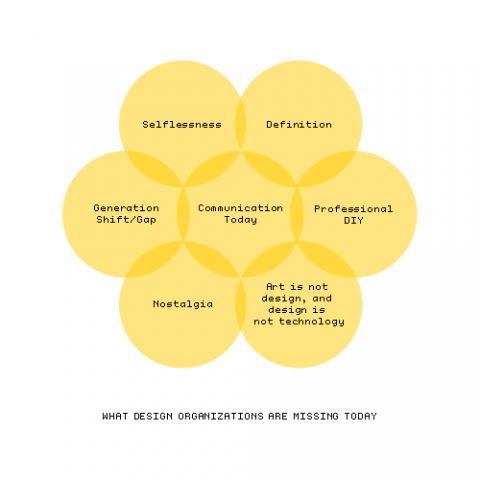
Thoughts on AIGA and the Design Industry in general by Michael Surtees: AIGA makes a turn for the better hopefully. And I agree with Michael, I am ridiculously excited that Debbie Millman is now president of the AIGA.
Watch Debbie Millman’s initial speech as national president of AIGA. This speech was at the AIGA Portland Oregon National Leadership Conference June 3-8, 2009.
Here’s a book that made me look: Never Sleep: Graduating to Graphic Design:
There is a major disconnect between the life of a design student and the transition to being a design professional. To demystify the transition, we share the failures, successes, and surprises during our years in college and progression into the field: the creative process, monetary problems, internships, interviews, mistakes, and personal relationships. We include the work from our first design class to our most current client work, along with side stories and interviews from our mentors, teachers, and peers. This book will serve as the ultimate companion for design students, educators, and anyone breaking into a creative field.
At the combined age of forty-six, Andre Andreev and Dan Covert have been recognized by I.D., BDA, Communication Arts, PRINT, Graphis, Metropolis, the Type Directors Club, The Art Directors Club, CMYK, HOW, Adobe, STEP Field Guide to Emerging Design Talent, and Young Guns. They met while studying graphic design at California College of the Arts and currently work for MTV’s on-air design department in New York, while operating their firm dress code at night. They also co-teach typography and design courses at Pratt Institute in Brooklyn. Andre eats no meat, Dan dislikes puppies.
(via considerthis)
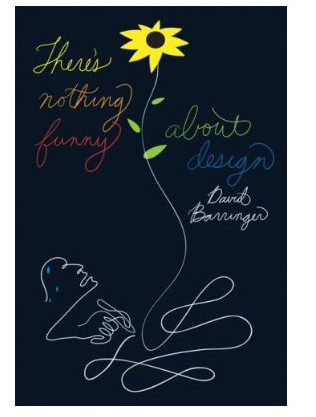
Here’s my latest read that had me miss subway stops: There’s Nothing Funny About Design by David Barringer. David’s articles, which have appeared in publications from Print to Emigre, are notable for his strong personal point of view, literary style, and even humor, not always attributes associated with writing about design. In this collection of essays, Barringer’s first, he wonders why drug names have so many X’s in them, ponders the rise of gory DVD covers, and ruminates on his father’s business card collection, pythons, and the human skull—proving again and again that design is everywhere you look for it (but may not have seen), without the powerful magnifying lens of this talented and exciting observer and writer.
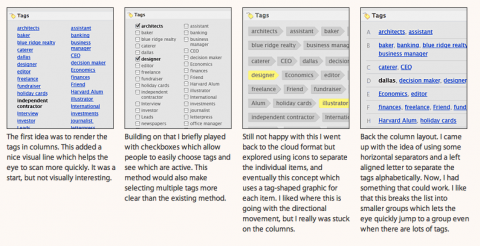
Jason Zimdarsshares his design process while working on 37Signal’s Highrise Contacts.
(via twittering squaredeye)
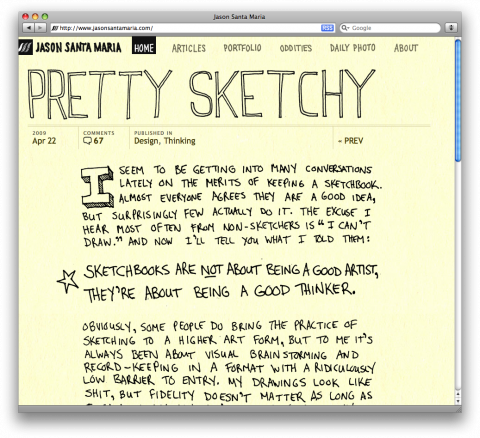
Great new post by Santa Maria’s – Pretty Sketchy.

Nik Ainley talks us through creating fashionable 3D artwork without touching any rendering tools whatsoever!
(A big thank you to Roland Lazarte for filming and editing.)
Sometimes I wonder, then: given that everyone in design seems to more or less know everyone else, are we really having the kinds of meaningful, constructive, critical discourses that we really should be having? Are we too quick to take offense at the opinions of our peers? Or are we pulling our punches too much when discussing the merits of the work that our peers turn out? To put a finer point on it: are we being honest with one another?
…
The notion of speaking openly, honestly and objectively about work is inherent to learning how to be a better designer. That’s why every design school uses critiques as a core tool of teaching design. Critiques conducted amongst peers, people you know, people that you have to see again the next day in class, that you have to build relationships with. If you’re learning design, then you’re giving and receiving criticism regularly. If you’re not engaging in constructive criticism, then you just aren’t learning about design. And yet, at some point when a designer achieves some modest level of notoriety or establishes some foundation of peers in the industry, the critiques stop. If you’re a practicing graphic designer of more than say five years, it’s a pretty good bet that no one outside of your design practice actively and regularly provides you with objective, rational and lucid feedback.
Dear Designer, You Suck, by Khoi Vinh
(via ignant / via noquedanblogs)
A few months ago David Airey wrote a brief article about graphic design contracts. His readers offered some excellent advice in the comments, and here he features a select few of these contract tips.
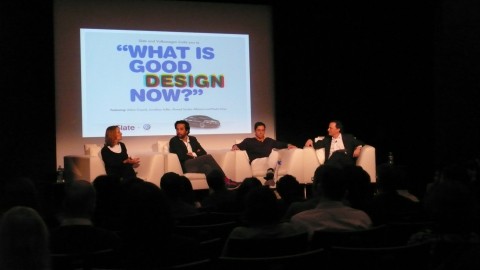
Our little Ella came down with a fever mid-afternoon and I rushed home thinking I wouldn’t be able to make it to tonight’s design panel discussion at the New York Museum of Arts & Design. But she rallied and thanks to the power of Motrin, and wonderful G, I was able to attend. The esteemed panel included Jonathan Adler (Furniture Designer), Paula Scher (Designer, Pentagram) and Ahmad Sardar-Afkhami (Architect) (I asked him and he doesn’t have a site up at this point, but should so shortly). The invitation to the event stated that the panel discussion would examine how industries will reinvent themselves in this new era; What’s Next for Design?
Adam Gopnik, a staff Writer for the New Yorker was the moderator for the panel, which by the way was sponsored by VW. For those of you who read my blog regularly, you might have come across a post or two where I express my frustration with panels. Well, the unthinkable has happened, I truly enjoyed this panel tonight, and it was very much thanks to Adam Gopnik. He did a *fantastic* job in steering the conversation, giving it an interesting flow. Hat tip to Adam.
I simply want to list a few notes I took of thougths that I thought were interesting:
Adam made a point that ‘design’ is the most present and most invisible element in our life.
– Jonathan Adler calls his own philosophy happy-chic. He believes his sensibility can be traced directly to the way he grew up, the design he was surrounded with. First design related memory of his childhood; their neighbor had a ceramic leopard that left a huge impression. He learned that things can be memorable. By the time he was four he believes it was all instilled in him thanks to his parents and Mrs. Goldsteen, his neighbor. (On a side note: I had never seen Jonathan Adler speak and I was impressed in how incredibly funny and eloquent he was. Definitely my panelist highlight!)
– Paula Scher stated that sylistically she has no personal ethic, no one thing is right.
– “The magic of applied art is that we have a problem to solve, opposed to the fine artist. We respond to and solve design challenges.” – Jonathan Adler
One of the funniest moments in the evening was when Jonathan Adler spoke about one of his latest projects, the redesign of Barbie’s 50th Anniversary House: “I loved designing for a 100% plastic client! I did this over the top, meta, glitter, frosting, cupcakes house. An amazing opportunity to step back from real life, with real people, to have a plastic client with no husband to weigh in. (Ken is in the picture but peripherally, Ken is not moving in.)”
– “A terrible collaboration is when there is no collaboration. When you work with someone who has no respect for what you do, what you’ve done and your skills. The client from hell is not that client, because you fire him, the client from hell is the one that is actually in the collaborative process and once you agreed on something they call you and they start making changes and slowly but surely more and more modifications kill the design.” Paula Scher
“Bad design is often design that is done by committee or focus groups, it is design that is overly considered, watered down, timid. The more the design comes from my gut, the more focus groups would hate it, but because I have my own stores, I don’t have to ask anyone for permission. I can get direclty to the end user.” Jonathan Adler
One of Jonathan Adler’s three muses is Alexander Girard (midcentury graphic designer), as he thinks that Alexander’s work really communicates the pleasure he got out of design.
– “I am always looking for the thing I don’t know, not the thing I’ve already seen. The beginner’s mind is what I am thriving for. I’ve always done the best design when I didn’t know what I was doing.” Paula Scher
Question from the audience: Design is getting more coverage than it used to. Is that true? “It’s definitely true”, says Paula. “Almost every major magazine now has a design column and a design writer. Why is that? Companies like Apple or Target have made design incredibly l apparent, people are starting to recognize that things are designed. They become savvy and they realize they’re being manipulated. The consumer is starting to have different expectations to environments.”
Overall an interesting evening. Thanks to Slate for organizing, MAD for hosting and VW for sponsoring.
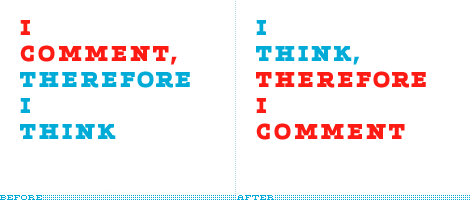
Like any person who runs a blog, I enjoy seeing the comment counts rise to 50, 70, 100 and more, but the truth is that no more than a quarter of those comments are worth reading. The main trend in comments is to say “this sucks” or some other alternative mode of pithy, ruthless offense. This stops now. Unless you have a substantiated and thoughtful response to why something, in your mind, “sucks” please do not comment at all. From now on all comments along the lines of “fail,” “this looks like student work,” or “the designer should be fired,” will be deleted at my own discretion without notification or explanation.
Read the entire post: Cracking Down on Comment Crime
Last month David Airey asked what the difference is between hiring an agency and hiring a freelance graphic designer. The discussion that followed was great, and he has picked out a few of the answers. Read them here.
(I do think though that David uses the wrong term here, it should not talk about freelance graphic designers but independent consultants.)